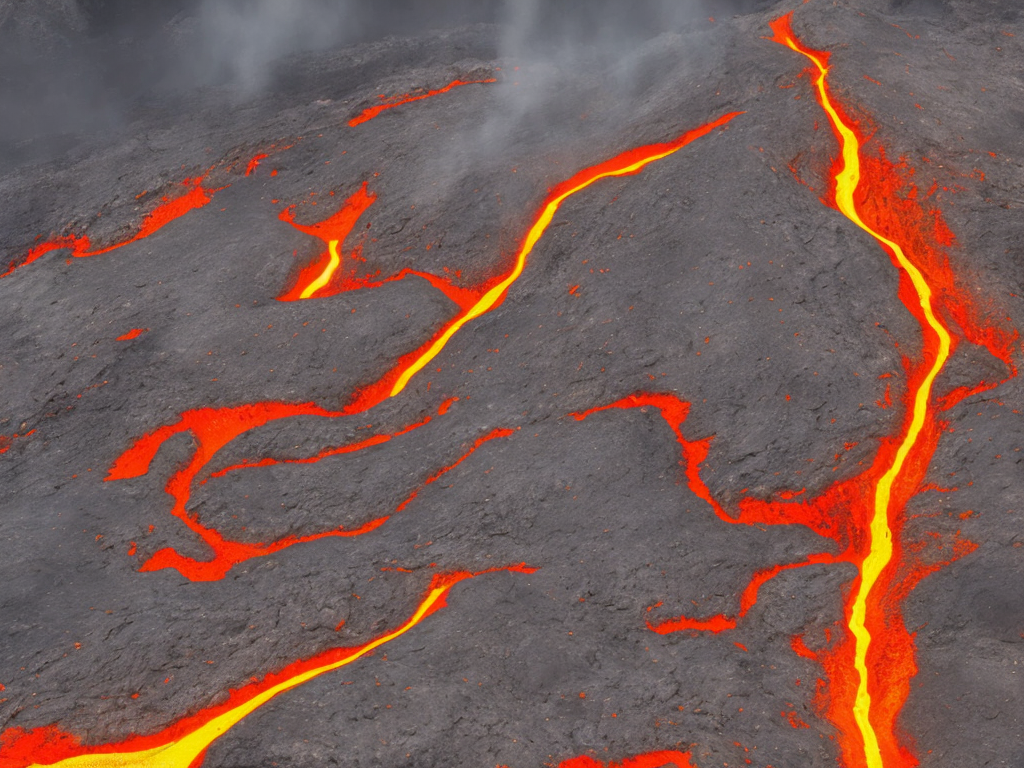
When thinking about volcanoes, many people often use the terms "magma" and "lava" interchangeably. However, these two terms actually have distinct meanings and definitions. In order to understand the difference between magma and lava, it's important to first have a grasp of the geological processes that occur within the Earth.
The Earth's crust is made up of a number of tectonic plates that can move and shift over time. These plates are responsible for the creation of mountains, oceans, and other geological features. Beneath the Earth's crust lies the mantle, a layer of hot, molten rock that is constantly in motion due to the intense heat and pressure of the Earth's core.
Magma is the term used to describe the molten rock that is found beneath the Earth's surface. As molten rock rises from the mantle into the crust, it is referred to as magma. When this magma reaches the Earth's surface, it is then referred to as lava.
It's important to note that not all magma reaches the Earth's surface. In fact, most magma cools and solidifies before it ever reaches the surface. This can result in the creation of large pockets of solidified magma, which are known as plutons.
The composition of magma can vary depending on a number of factors, such as the temperature and pressure of the mantle, as well as the type of rock that is being melted. Some magma is composed primarily of silicate minerals, while other types of magma may contain significant amounts of carbon, sulfur, or other chemicals.
When magma does reach the Earth's surface, it is typically ejected from a volcano. As the magma is ejected, it cools and solidifies, forming a series of cracks and fissures in the Earth's crust. Over time, these fissures can become larger and more pronounced, eventually leading to the formation of a volcanic vent.
One of the key differences between magma and lava is their physical properties. Magma is typically much thicker and more viscous than lava, due to the fact that it is under immense pressure beneath the Earth's surface. As magma rises to the surface, however, it encounters lower pressures and temperatures, causing it to become less viscous.
Lava, on the other hand, is much thinner and more fluid than magma. This allows it to flow more easily across the Earth's surface, eventually solidifying and forming a new layer of rock.
Another difference between magma and lava is their temperature. Magma can reach temperatures of up to 1300 degrees Celsius (2372 degrees Fahrenheit), while lava typically ranges between 700 and 1200 degrees Celsius (1292 and 2192 degrees Fahrenheit). This extreme heat is one of the reasons why volcanoes can be so dangerous, as the heat and toxic gases released during an eruption can be deadly to nearby inhabitants.
Despite these differences, however, magma and lava are both made up of the same basic components. Both are primarily composed of silicate minerals, with smaller amounts of other chemicals and elements mixed in.
Overall, the distinction between magma and lava is an important one that is key to understanding the geological processes that shape our planet. By studying these processes, scientists can gain a better understanding of everything from the formation of mountains and oceans to the potential hazards posed by volcanoes and other natural disasters.
 Self-Instruct
Self-Instruct